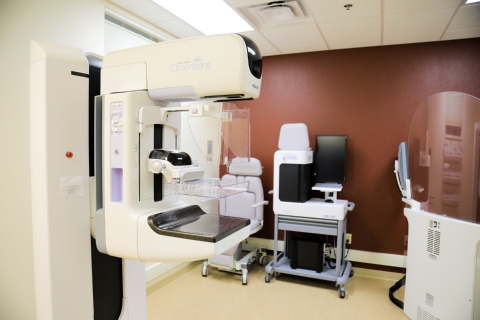 Mammography is a specific type of imaging that uses a low-dose x-ray system for examination of the breasts. Most medical experts agree that successful treatment of breast cancer is linked to early diagnosis. Mammography plays a central part in early detection of breast cancers; because it can show changes in the breast up to two years before a patient or physician can feel them.
Mammography is a specific type of imaging that uses a low-dose x-ray system for examination of the breasts. Most medical experts agree that successful treatment of breast cancer is linked to early diagnosis. Mammography plays a central part in early detection of breast cancers; because it can show changes in the breast up to two years before a patient or physician can feel them.
It is recommended that women age 40 and older should have mammogram’s every year. Women who are at higher than average risk of breast cancer should talk with their health care provider about whether to have mammogram’s before age 40 and how often to have them. It is important to remember that age is the most important risk factor for breast cancer. The older a woman is, the greater her chance of developing breast cancer.
Mammography cannot be used alone to evaluate for breast cancer. Every woman should get regular exams by their physician and do self breast exams. Findings on mammography may be indeterminate and lead to more specific tests, such as extra mammographic views, ultrasound or breast MRI.
Digital Mammography versus Film Screen Mammography (non-digital)
Both digital and film mammography use X-rays to produce an image of the breast.
In film mammography, which has been used for over 35 years, the image is created directly on a film. While standard film mammography is very good, it is less sensitive for women who have dense breasts. Prior studies have suggested that approximately 10 percent to 20 percent of breast cancers that were detected by breast self-examination or physical examination are not visible on film mammography. A major limitation of film mammography is the film itself. Once a film mammogram is obtained, it cannot be significantly altered; if the film is underexposed, for example, contrast is lost and cannot be regained.
Digital mammography takes an electronic image of the breast and stores it directly in a computer. Digital mammography uses less radiation than film mammography. In addition, this imaging technique has reduced image artifacts. Because of the digital acquisition and processing, digital mammography allows for fewer repeat images. It also allows improvement in image storage and transmission because images can be stored and sent electronically. Radiologists also can use software to help interpret digital mammograms (see Computer Aided Detection).



